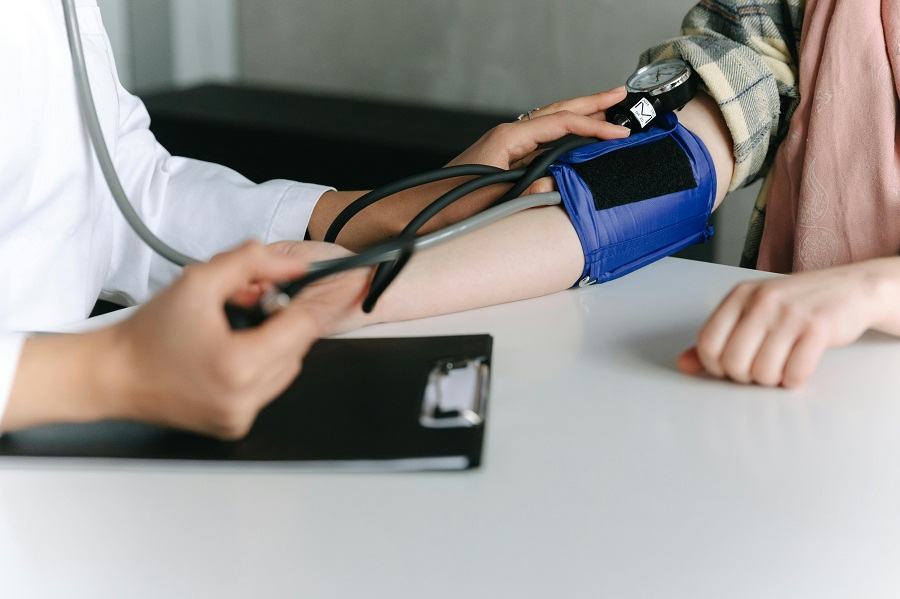
Published :
Updated :

When you suddenly stand up from a sitting position and feel your head spin for a bit, it might indicate low blood pressure. This symptom can indicate orthostatic hypotension, where blood pressure drops significantly upon standing. The number of people having it isn't easy to count, but orthostatic hypotension is said to become familiar with ageing.
Maintaining balanced blood pressure is crucial; it shouldn't be too high or too low. Low blood pressure, or hypotension, means that essential body parts such as the heart, brain, and other organs may not receive sufficient blood and oxygen. Generally, normal blood pressure ranges between 90/60 mmHg and 120/80 mmHg.
The common symptoms of low blood pressure are dizziness, fatigue, fainting, nausea, palpitations, lethargy, blurred vision and difficulty breathing normally.
Managing blood pressure through a balanced diet and lifestyle is essential to keep it regular.
Saline Solutions
Saline solutions, such as Oral Rehydration Salts (ORS), are well-known for treating dehydration. They can also help manage low blood pressure related to dehydration. ORS is an immediate remedy and a must-have in every household for emergencies. Alternatively, coconut water, rich in sodium, can be used as a natural substitute.
Liquid foods and drinks
For patients with low blood pressure, consuming liquid foods such as juice, milk, and soup can be more beneficial than just drinking water. These liquids help with dehydration and malnutrition, providing essential nutrients and supporting overall health.
Iron-rich foods
Iron is crucial for increasing blood pressure, and seafood is an excellent source of highly absorbable iron. Other iron-rich foods include lentils, beef, chicken, and various vegetables. Pumpkin seeds are also a good source of iron and can be easily incorporated into the diet.
A study published in the American Journal of Hypertension also indicates that elevated plasma homocysteine levels are an independent risk factor for high blood pressure and cardiovascular disease.
These homocysteine levels are regulated by three essential vitamins, vitamin B6, vitamin B12, and folic acid. Incorporating foods rich in these vitamins, such as lean meats, poultry, eggs, seafood, beans, peas, lentils, nuts, seeds, and soy products, may help support overall cardiovascular health and assist in managing low blood pressure.
Salted snacks
Salted snacks such as crackers, chips, fries, and cookies can quickly boost blood pressure due to their high sodium content. While these snacks may offer some protein and fats, they are not considered healthy sources of these nutrients.
Although they can help temporarily increase blood pressure, long-term consumption may lead to adverse health effects, such as increased risk of hypertension and cardiovascular disease. It is essential to consume these snacks in moderation and focus on healthier sources of protein and fats for overall well-being.
Caffeine
Contrary to some beliefs, caffeine can have several health benefits, but its effects on blood pressure should be considered carefully. An analysis of 34 studies found that consuming 200–300 mg of caffeine, roughly the equivalent of 1.5–2 cups of coffee, led to an average rise in systolic blood pressure by 8 mm Hg and diastolic blood pressure by 6 mm Hg. Therefore, regular caffeine consumption, such as coffee, can increase blood pressure. Moderation is vital in avoiding any adverse effects.
Maintaining balanced blood pressure is essential for overall health, and incorporating these foods into your diet can help manage and prevent hypotension. It is always necessary to consult with a healthcare provider before making significant changes to your diet or treatment plan.
fatemaaktarhellbound@gmail.com


 For all latest news, follow The Financial Express Google News channel.
For all latest news, follow The Financial Express Google News channel.